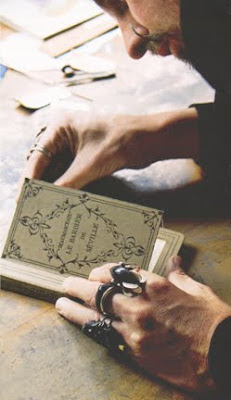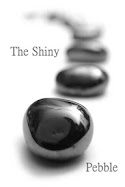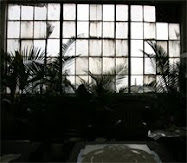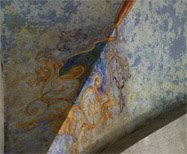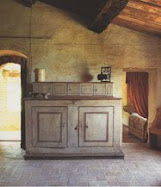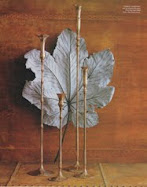One of my most read posts during the last few months has been Mariano Fortuny- Did you know he also painted? As you could tell, I adore his lush velvets, magical pleated silks and his style of painting. I look forward to visiting Venice this fall and the Palazzo Fortuny.
Last week I was contacted by a wonderful gentleman from Italy named Sig. Giorgio Busetto. He corrected the post by informing me that Fortuny's father actually painted the flowers in a vase photo:
"The painting with pot of flowers has been painted by
MARIANO FORTUNY Y MARSAL, father of Mariano Fortuny Y Madrazo (1871 - 1949).
The signature ,without doubt, belong to Fortuny Y Marsal (1835 - 1874)."
I stand corrected.
Giorgio also kindly offered to share with me three more photos that are in his family. It turns out that his mother-in-law, Clara, who died last year at age 95, began to work in the Fortuny Atelier around 1930. She prepared the various velvets, silks and other materials for coloring by Mr. Fortuny until his death in 1949.
Later, Mrs. Henriette Fortuny, the widow of Mariano, called Clara back to become her housekeeper until she passed away in 1965. Henriette Fortuny gave her these paintings, dedicating them on the back with the inscription "... alla cara Clara..."; cara means beloved.
Without further ado, here are the cherished Fortuny paintings in the care of Sig. Giorgio Busetto.
This is the beautiful Ritratto di Henriette Fortuny, circa 1917.
It is tempera on wood and measures 40 cm x 55 cm.
The dedication on the back is:
"alla carissima Clara un ricordo Henriette Fortuny"
This photo is named Perugia, Rue e vielles maisons.
It is tempera on wood and measures 17.5 cm x 13 cm.
The dedication on the back reads "Appartiene alla cara Clara da Henriette Fortuny"
Lastly, here is Corrida de Toros. A picador (who jabs the bull with a lance) is in the foreground and a toreador (the person who performs with and kills the bull) is in the background. The painting is also tempera on wood and measures 18 cm x 13 cm.
The dedication on the back is "Alla cara Clara di Henriette Fortuny".
On behalf of all of the Fortuny lovers here in the US, thank you, Sig. Giorgio Busetto, for your generosity in sharing these precious paintings with us!
+web.jpg)









































